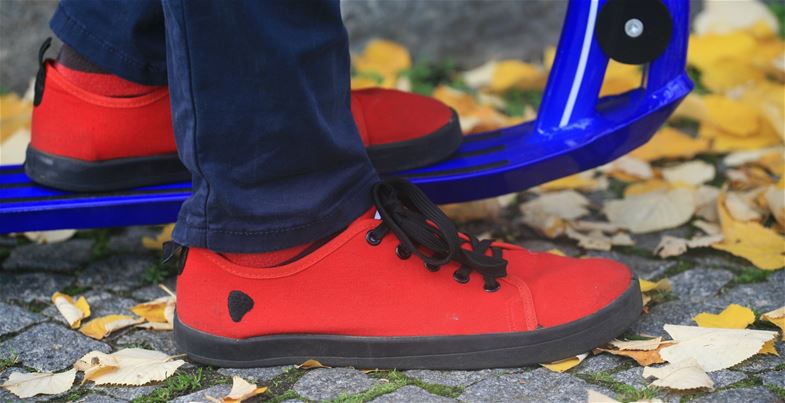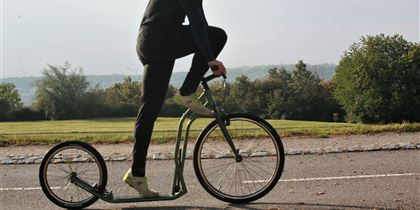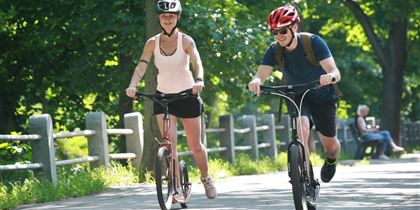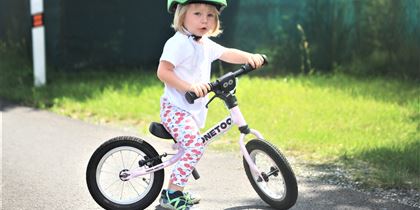Looking for the perfect shoes for scooter riding? Try barefoot shoes
| Vendula KosíkováThe feet need freedom to engage fully in movement, not only when walking but also when riding a scooter. What footwear is suitable for this activity? We asked physiotherapist and podiatrist Edita Prošková.
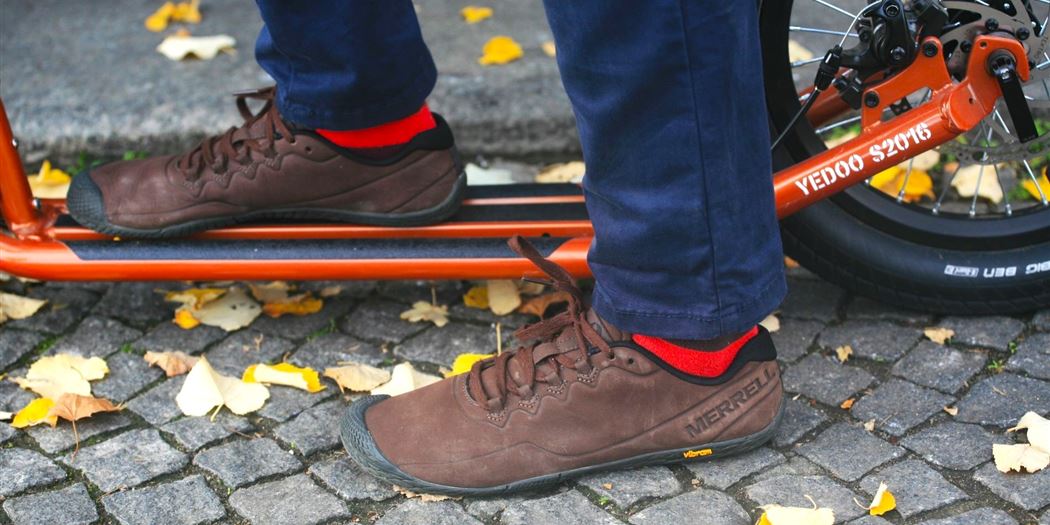
Give your feet the freedom to move
To find out whether your shoe fits the physiological shape of your foot, simply remove the insole from the shoe and stand on it barefoot. If the foot overflows the insole, the shoe is too narrow.
Physiotherapist and podiatrist Edita Prošková is satisfied when the feet are free to move and can function as naturally as when walking barefoot:
“The problem with ready-made shoes, whether they are walking shoes or sports shoes, is that they are narrower than the actual physiological dimensions of the foot, pushing the toes together, and then they cannot engage in movement naturally.
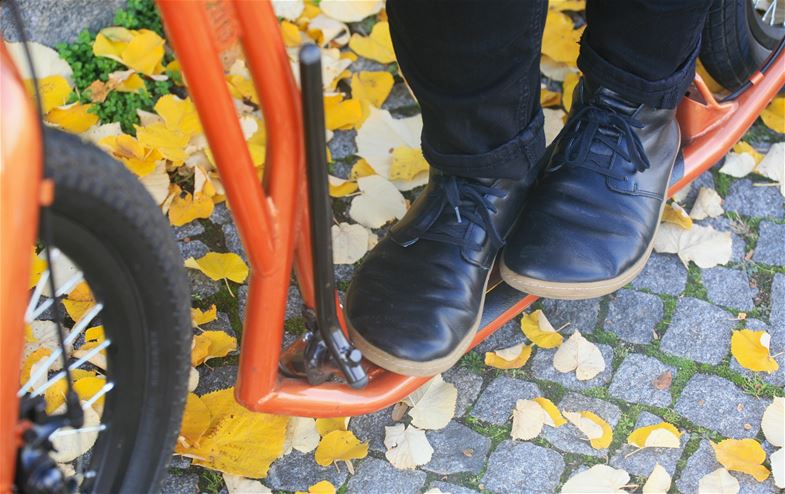
Why barefoot shoes and which ones
Shoes for scootering should have sufficient room, especially for the toes, which play an important role not only in pushing off, but also in maintaining balance. This is provided by the standing leg, the outstretched toes of which help to better distribute the weight of the body and maintain stability.
That’s why I incline to the so-called barefoot shoes, which:
- Have a wider tip, which faithfully corresponds to the physiological shape of the foot. The toes in the shoe have enough room to spread out and the foot has enough room to stretch naturally when moving.
- They have a flat sole with no drop – heel. The heel and toe are flush, allowing the centre of gravity of the body to be kept in a central position. (On the other hand, a heel tilts the body, throwing it out of balance, which puts unnecessary strain on the joints and disrupts proper movement patterns.)
- They have a thinner (up to 5 mm) and flexible sole that adapts perfectly to the physiological function of the foot.
- They have no internal moulding, thus allowing active arch involvement. (Many traditional athletic shoes are narrowed in the arch, unnaturally supporting the arch and causing the weight of the body to shift to the malleolar edge of the foot)
- They are as lightweight as possible
When the toes are involved in the scooter ride, the rebound is much more effective – because it takes place from a larger and more stable surface than that provided by conventional shoes. That is why the right footwear can improve your sports performance in addition to your posture and movement patterns.
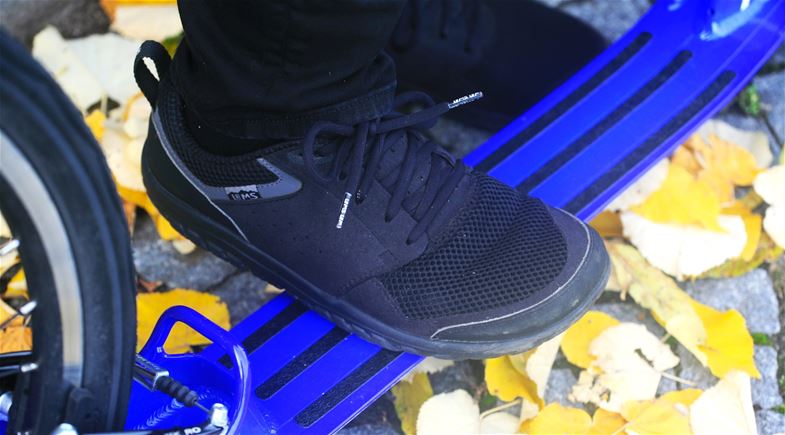
For scooter riding, I would lean towards barefoot shoes that have a slightly higher and thicker sole (5 mm or more), or shoes with a foam insole that cushions the impact when the foot hits the riding surface.
For starters, the ideal shoe is the so-called compromise shoe, which, like barefoot shoes, is characterized by a wide toe box with sufficient space for the toes, but unlike them have, for example, a reinforced sole, a thicker and stronger sole, or a slightly raised heel.
The higher and firmer sole will also prevent excessive toe breaking, ensuring that the bounce is done from the right place – the ball in front of the toes.
How to push-off correctly
The bounce movement happens very quickly, and not everyone is aware of it, but the moment we roll the foot onto the ball, we should brace the toes and then bounce off them.
In no case should the metatarsal heads, or the last row of the transverse arch, be overloaded by excessive finger bending. When pushing-off, brace your fingers and bounce off them, never breaking them to avoid overloading the metatarsal bones.
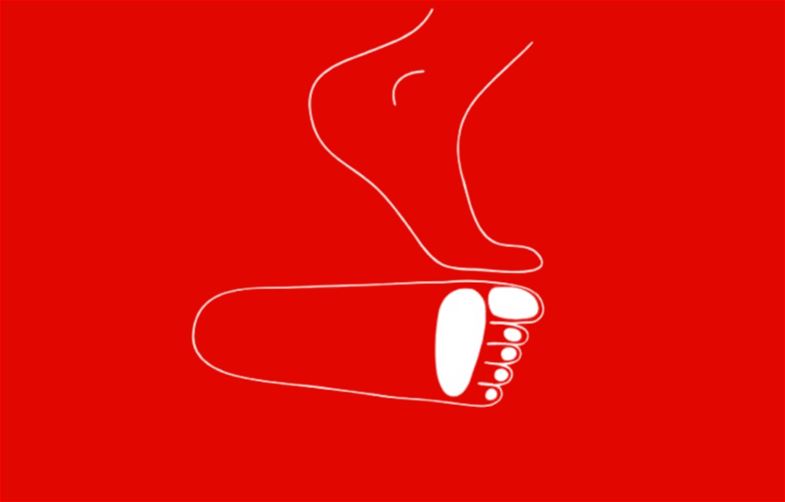
When choosing shoes, do not forget about the toe room
Why I switched to barefoot shoes:
“I got into barefoot shoes thanks to a long search for comfortable shoes that would not oppress my little toes. Shoes have become my joy, my new connection to the world and nature. And that’s what I love most about them – I can feel the surface under my feet wherever I go, looking for different bumps to explore with my feet. Thanks to barefoot shoes, my feet and ankles are stronger and my knees no longer hurt.”
I like to wear nice city shoes like the Vasky Terry for short urban routes to work.
For longer scooter rides I wear shoes with thicker soles, but I still keep toe room and zero drop. My favourite scooter shoes for smooth surfaces are the Lems Primal Zen and Altra Escalante, and for off-road I choose the Altra Superior.” (Irena, Yedoo Marketing Specialist)
It is important to choose shoes that not only fit the shape of the foot, but also have extra room for functional foot movement.
The extra space that allows for the natural expansion and contraction of the foot is called the toe room.
To find the correct shoe size, add 2 to 4 mm to the widest part of the foot and 0.8 to 1.2 mm to the longest part of the foot (whether it is the big toe or another toe). That is, if we’re talking about adult shoes. Toe room form children’s shoes should not be so large, so that children do not trip over it.
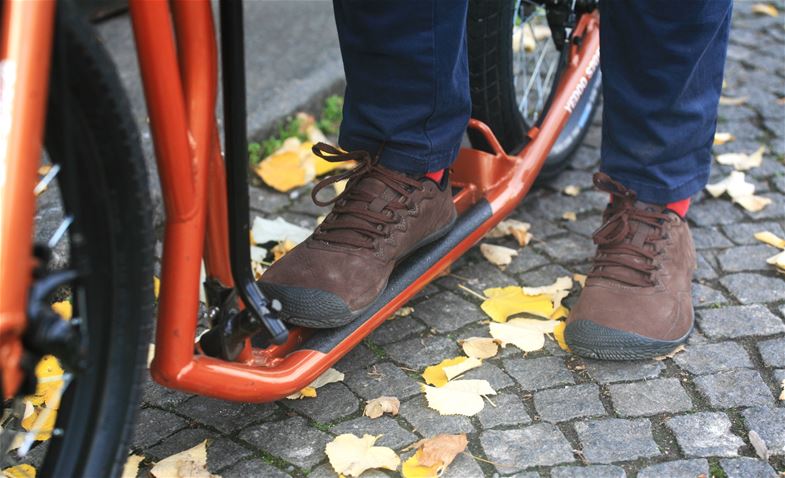
Switch to barefoot shoes gradually
If you are not used to walking barefoot and have only worn traditional shoes, give yourself time and switch to barefoot shoes slowly.
Barefoot walking involves different muscle groups, which can be tiring and strenuous at first. Therefore, take your old shoes with you on a long walk, so you can change before you overstrain yourself.
At first, you may also be bothered by shocks and unevenness, to which the foot has to readjust. Walking barefoot will also affect your posture, hip and chest position, so you may experience temporary pain.
You may also find it helpful to concentrate on rolling your foot correctly as you walk, as shown in the picture below. When riding a scooter, concentrate on strengthening your fingers on the push-off.
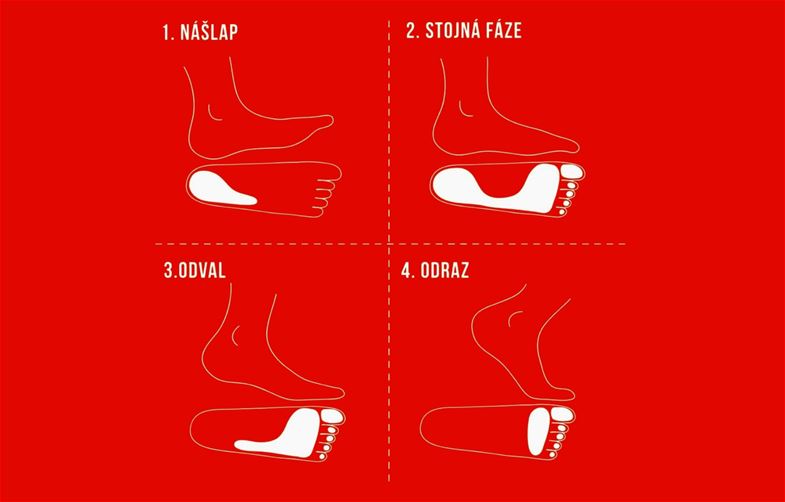
Feeling alive as a reward
Who is Edita Prošková
She graduated from the Czech Technical University in Prague with a bachelor’s degree in physiotherapy and continued to study podiatry and podology. In her private practice in Roudnice nad Labem, she deals with acquired as well as congenital foot defects in adults as well as children. More
Once you’ve overcome the initial difficulties, barefoot shoes reward you with a feeling of liveliness in your feet that comes from the interactive connection with the surface. Being aware of all the surface irregularities and elevations you wouldn’t otherwise notice will give you a new, more playful perspective on your environment.
Do you ride a lot? Have your feet examined
If you ride a scooter intensively and for a long time, it is best to have your foot professionally examined by a podiatrist to ensure that you have the right movement habits and that your favourite physical activity is not contributing to muscle imbalances and deformation of the foot itself.
If you have any problems, the podiatrists will have the insole customized for you. It will help you to guide the foot correctly as it rolls away, ensuring a more advantageous and stable foot position. In my experience, most athletes should have a customized insole.”
